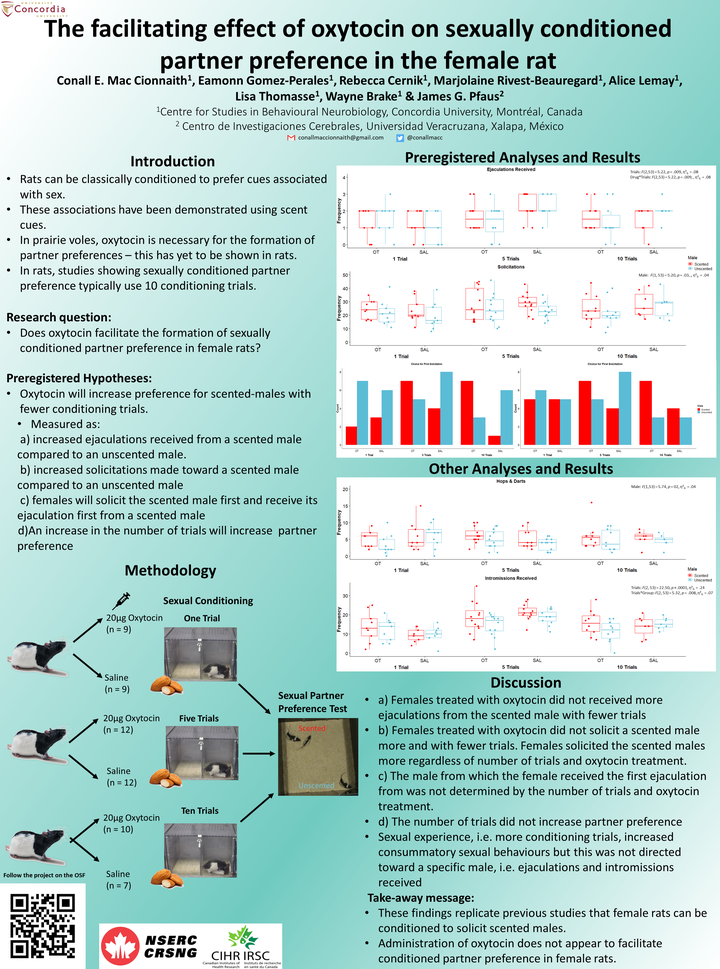The facilitating effect of oxytocin on sexually conditioned partner preference in the female rat

Conall E. Mac Cionnaith, Eamonn Gomez-Perales, Rebecca Cernik, Marjolaine Rivest-Beauregard, Alice Lemay, Lisa Thomasse, Wayne Brake & James G. Pfaus
Presented at the British Neuroscience Assocation Festival of Neuroscience in Dublin 2019
Accepted preregistered abstract
A growing body of evidence shows important roles of Pavlovian learning in sexual partner selection. Female rats who repeatedly copulate with almond scented males selectively solicit, and preferentially receive the scented male’s ejaculations, relative to an unscented male. In female prairie voles, partner preference formation is blocked by the administration of an oxytocin receptor antagonist and is facilitated by oxytocin. Previous studies examining sexually conditioned partner preference in the female rat have typically required ten conditioning trials prior to partner preference emerging. The aim of this study is to examine whether oxytocin facilitates faster formation of sexually conditioned partner preference in female rats.
Methods: Hormonally-primed ovariectomised Long-Evans female rats (N=72) will be given either one, five, or ten sexual conditioning trials with an almond scented male prior to an open-field partner preference test. Females will be injected intraperitoneally with either 20µg of oxytocin or saline one minute before conditioning trials (n=12). In the partner preference test, an almond scented and an unscented male will be tethered to opposite corners of the open field, allowing the female to copulate preferentially with either male. Partner preference tests will be recorded and then scored by a blinded observer for 1) solicitations made toward the scented and unscented males, 2) ejaculations received by the female from each male, and 3) the female’s choice for first solicitation and ejaculation.
Approach for statistical analysis: Each behaviour will be analysed with a 3x2x2 three-way mixed ANOVA. We hypothesise a three-way interaction between drug treatment, number of conditioning trials, and the type of male (scented vs unscented). Specifically, females given one and five conditioning trials with oxytocin will solicit and receive more ejaculations from the scented male compared to the unscented male, and this effect will not be present in the saline treated groups. At ten trials we expect no differences in solicitations made toward and ejaculations received from the scented male between the oxytocin and saline treated females. The choice for first ejaculation and solicitation will be analysed using χ2 tests. Sample size was calculated to achieve 90% power with a medium effect size.